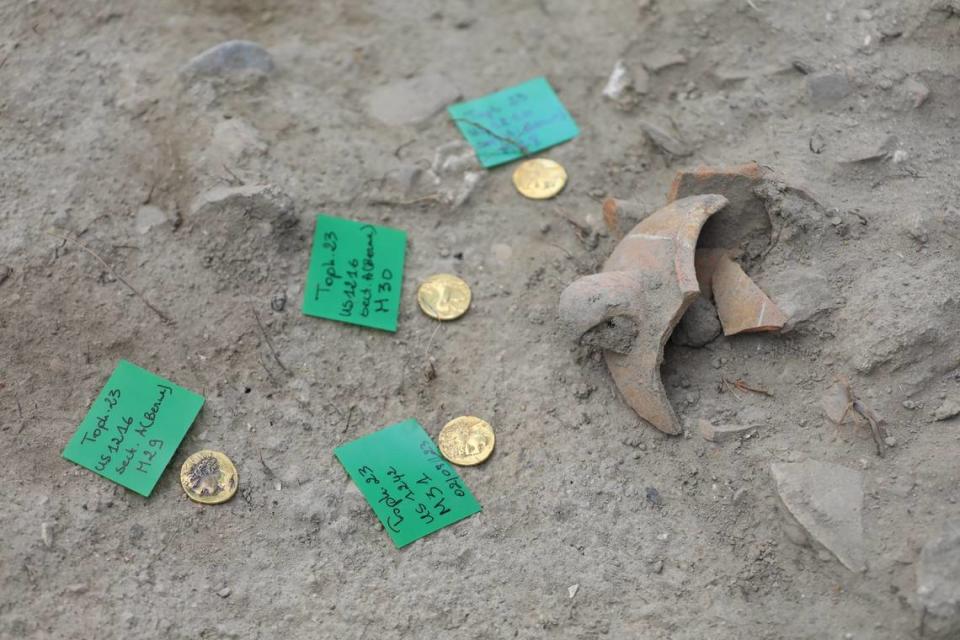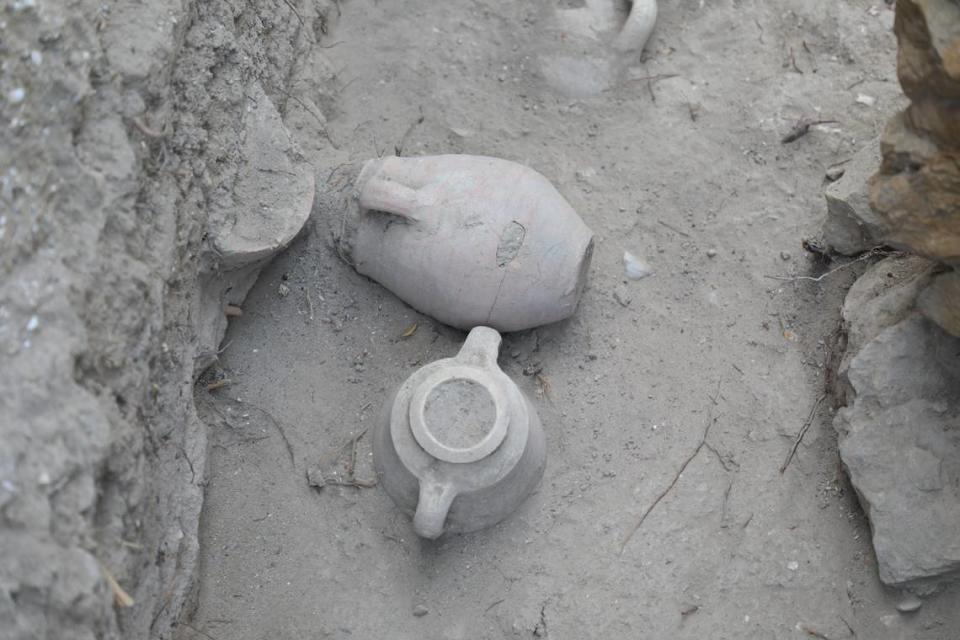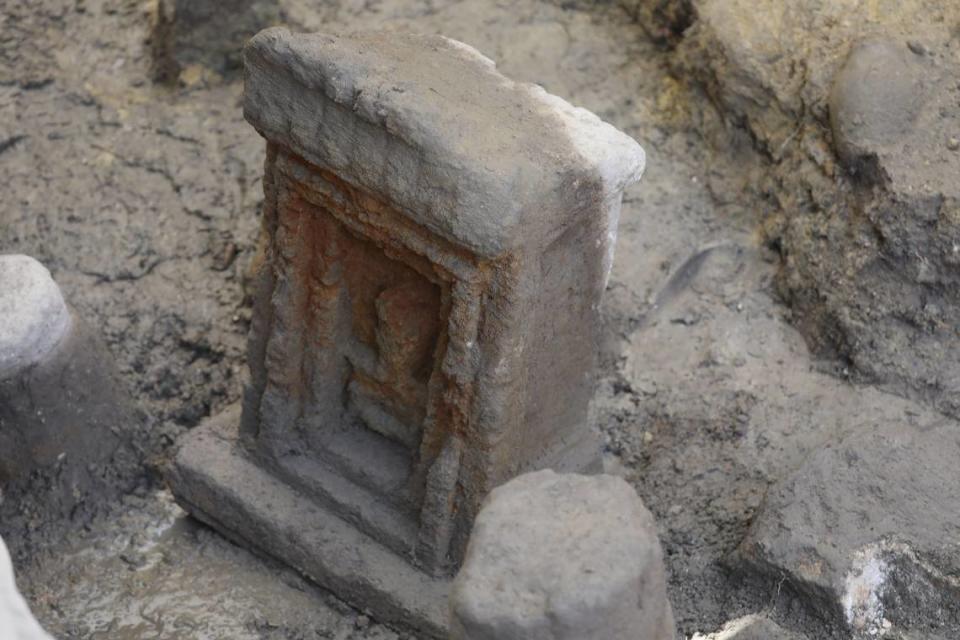Rare golden gifts — left at a sacrificial site 2,300 years ago — uncovered in Tunisia
Along the coast of Tunisia sit the ruins of a once-great city whose power rivaled Rome: ancient Carthage. Today, the city’s sacred sacrificial site collects dust. Millennia ago, it collected gold, devotion and adoration from worshippers.
Carthage was founded about 2,900 years ago by the Phoenicians, according to Britannica. It grew into a bustling trade hub and sea port with “legendary” wealth.
Like other Phoenician cities, Carthage had a tophet, “a sacred precinct … where sacrifices and burials were made, especially of young children,” according to the World History Encyclopedia. The tophet in Carthage had a “shrine area” for the sacrificial offerings and a cemetery area where the deceased were then buried.
Archaeologists excavating the tophet uncovered a collection of offerings, Tunisia’s Ministry of Cultural Affairs said in an Aug. 11 news release. They found five gold coins from 2,300 years ago, tombstones and several urns with the remains of animals, infants and premature babies.
The rare gold coins are about an inch in size and have a design showing the face of Tanit, an ancient goddess of fertility and motherhood, the Tunisian outlet Shems FM reported. Photos show a few of the still-shiny golden treasures.

The coins were left as offerings to the tophet’s main deities, the god Hammon and the goddess Tanit, by wealthy worshippers, RT reported.
Photos show some of the urns and tombstones found at the ancient sacrificial site.

The tophet in Carthage is a massive sacrificial site and cemetery, Lonely Planet reported. Since it was rediscovered in 1921, archaeologists have uncovered “more than 20,000 urns” with the remains of children, “mostly newborn, but also children up to age four,” buried at the site.
Although once contested, experts have found “‘overwhelming’ evidence that … Carthaginian parents ritually sacrificed young children as an offering to the gods,” Oxford University said in a 2014 news release.

“Perhaps it was out of profound religious piety, or a sense that the good the sacrifice could bring the family or community as a whole outweighed the life of the child,” Josephine Quinn, the co-author of a study on the topic, told Oxford University.
“We have to remember the high level of mortality among children — it would have been sensible for parents not to get too attached to a child that might well not make its first birthday,” Quinn said. “We should not imagine that ancient people thought like us and were horrified by the same things.”
Phoenician Carthage was conquered by the ancient Romans who rebuilt a Roman city on the ruins of their rival, according to Britannica. Modern-day Carthage is a suburb of Tunis, the capital of Tunisia.
Google Translate was used to translate the news release from Tunisia’s Ministry of Cultural Affairs and articles from RT and Shems FM.
Beachgoer spots odd object in sand in Italy. It may have carried wine 2,000 years ago
Ancient Roman baths — with changing room and iron window grates — unearthed in Spain
8-year-old playing in school sandbox stumbles on 1,800-year-old treasure in Germany

